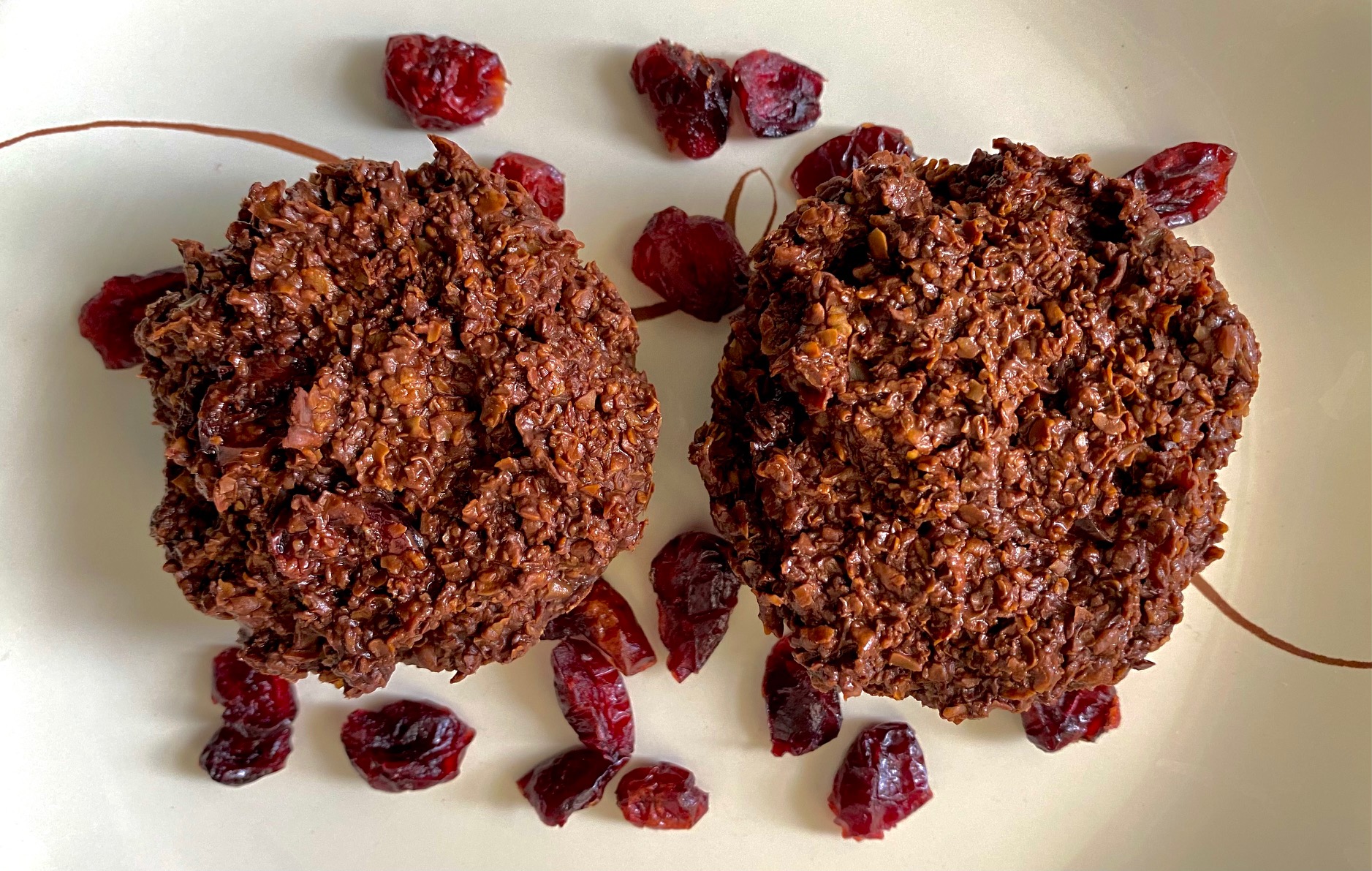

These delicious chocolate cranberry bran muffins are packed with healthful fiber and micronutrients. The words “fiber” and “delicious” are not often used in the same sentence…thanks to cacao, molasses, and oat bran, it’s possible! About 115 Calories and 5g of fiber in each muffin.
I like bran muffins, but don’t like the bloaty feeling as if I’ve eaten an entire wicker swing set. These are perfectly portioned at 115 Calories each and contain 5g of fiber per muffin. Enough to do some good, but not enough to cause…ahem…unexpected surprises.
Each muffin has 5 g of sugar which comes from the no-sugar added dried cranberries and molasses. Molasses is a necessary ingredient in bran muffins for the classic taste, but we’ve used less than in a typical recipe and supplemented with no sugar pancake syrup.
These chocolate cranberry bran muffins do not contain oil or added fat. Strategic use of riced cauliflower makes them moist but adds no taste. Many of my clients struggle with vegetable intake – there are plenty of ways to incorporate them into your diet to make them easier to eat.
Be sure to let them cool completely before placing in a Tupperware in the fridge. They still taste excellent after re-heating in the microwave for a few seconds. I recommend topping with Greek yogurt or some almond butter.
A delicious and rich chocolatey treat with beneficial fiber and micronutrients. 113 calories with 5g of fiber per muffinLooking for a balanced nutrition strategy to meet your goals? Contact me for a free consultation.
Disclosure: as an amazon associate I earn from qualifying purchases. This supports keeping the website ad and pop-up free.


